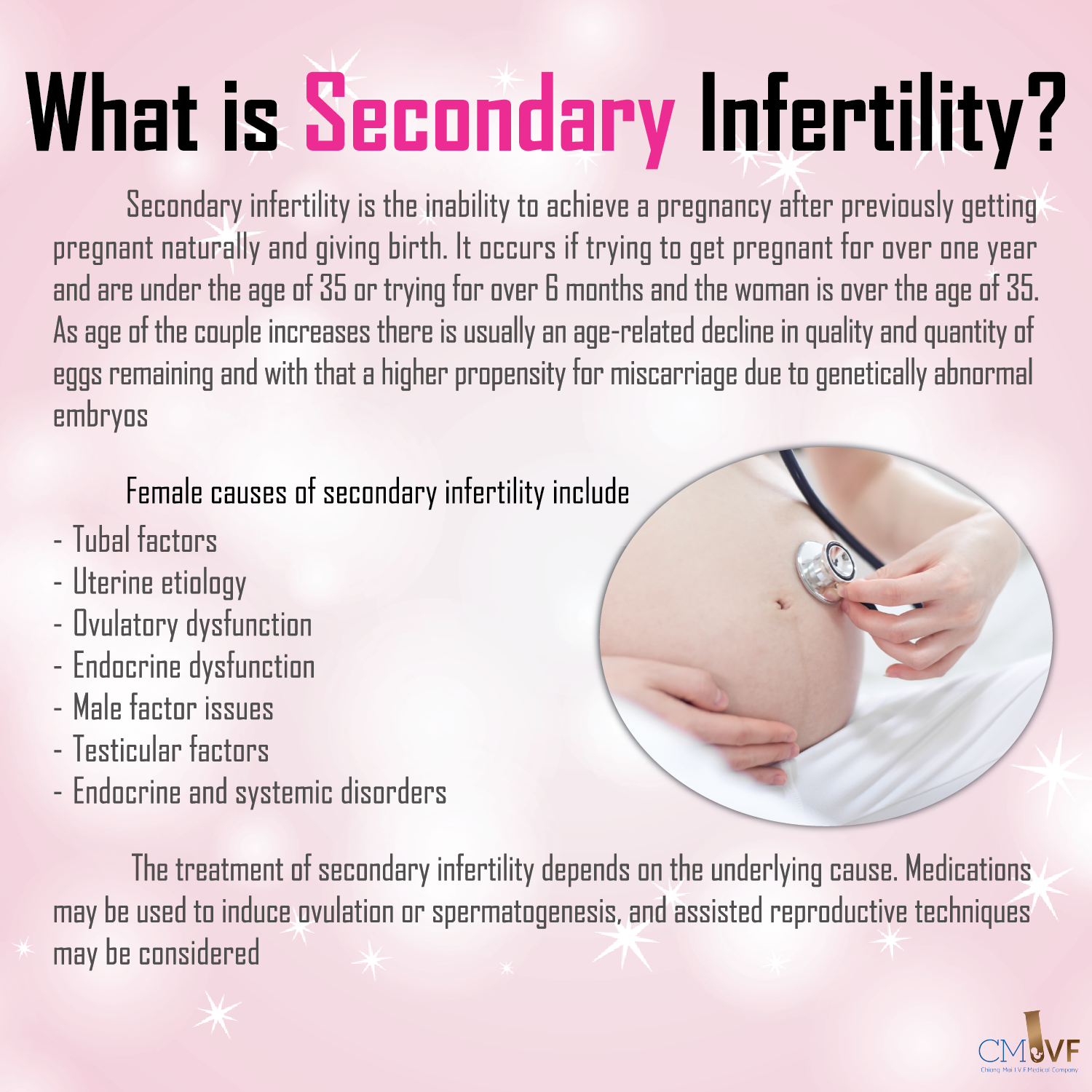
Secondary infertility is the inability to achieve a pregnancy after previously getting pregnant naturally and giving birth. It occurs if trying to get pregnant for over one year and are under the age of 35 or trying for over 6 months and the woman is over the age of 35. As age of the couple increases there is usually an age-related decline in quality and quantity of eggs remaining and with that a higher propensity for miscarriage due to genetically abnormal embryos.
Female causes of secondary infertility include:
• Tubal factors: Pelvic inflammatory disease, salpingitis isthmica nodosum, endometriosis, and prior surgery can lead to tubal damage or blockage, preventing the fertilization of the egg.
• Uterine etiology: Congenital malformations, fibroids, and uterine scarring can affect the implantation of the fertilized egg.
• Ovulatory dysfunction: Conditions such as polycystic ovary syndrome (PCOS), diminished ovarian reserve, and premature ovarian insufficiency can disrupt the normal release of eggs.
• Endocrine dysfunction: Hormonal imbalances, such as hypothyroidism and hyperprolactinemia, can interfere with ovulation and fertility.
Male causative factors are:
• Male factor issues: Hypogonadism, post-testicular defects, seminiferous tubule dysfunction, and ejaculatory problems can all contribute to male infertility.
• Testicular factors: Testicular failure, varicocele, and impaired spermatogenesis can affect sperm production and quality.
• Endocrine and systemic disorders: Hypogonadotropic hypogonadism, caused by hypothalamic or pituitary diseases, can lead to infertility in men.
The treatment of secondary infertility depends on the underlying cause. Medications may be used to induce ovulation or spermatogenesis, and assisted reproductive techniques may be considered. It is also important for couples to make lifestyle changes to minimize modifiable risk factors, such as smoking cessation, weight loss, and a balanced diet.
